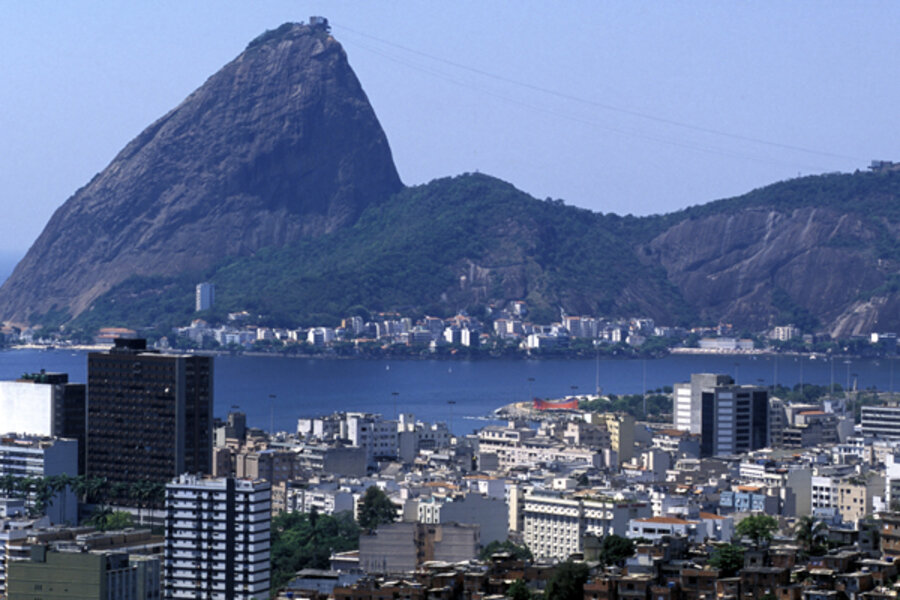Rio de Janeiro's new hazard: exploding manholes
Loading...
Another day in Rio de Janeiro. Another manhole cover exploding into the sky, flattening cars, breaking windows, sending people scampering for safety.
Yes, while Rio de Janeiro is a city that instinctively draws people to gaze into the distance at the beach, the statue of Christ on Corcovado hill, and the curves of Sugarloaf mountain, it is also now a city where people glance to the ground, suspiciously eyeing those heavy iron manhole covers, wondering if that one there in front of them might be the next one to blow.
On Monday, another cover exploded into the air in Botafogo, injuring two people, smashing a nearby window, and damaging a parked motorcycle.
It was the 10th manhole cover to blow this month. More than 60 have now exploded into the Rio skies since last year.
Dozens of people have been injured, including two American tourists who were hit in Copacabana, and thousands of dollars of damage has been done by the flying manhole covers, all of which are owned by Light, Rio’s electricity company.
The explosions are mostly caused by sparks from old transformers inside underground junction boxes igniting gasses, Light’s president Jerson Kelman said.
“We are renovating the underground system, which is more than 60 years old and has visible signs of stress and aging,” Mr. Kelman says. “We started with the boxes where there are transformers. There’s never been this kind of investment in reforming the underground system, we have 88 million reais [around $56 million]. Cash is there, but we can not fix everything in a month.”
Kelman said that in April 130 manhole covers showed signs of exploding. But the Rio de Janeiro state public prosecutor’s office argues the real number could be as high as 4,000.
The state public prosecutor’s office sued Light, saying the explosions had “turned the city’s streets and avenues into veritable minefields.”
“The risk of unexpected lethal explosions only exists in places that are at war or where there are bomb threats,” it said in a brief. A judge ruled that Light must pay a 100,000 reais fine (around $64,000) for every subsequent explosion.
Cariocas locals have taken the threats of flying manhole covers with characteristic light-heartedness. One person said the stray bullets from Rio’s once violent drug wars have been replaced by stray manhole covers. Another said they were evidence that flying saucers exist. One group stuck adhesives on the ground around some covers to make them looking like fizzing time bombs.
The city, though, knows it is losing a small publicity battle just as it was winning the larger war to turn the city around after decades of stagnation.
Rio will host the Olympics in 2016 and the final of soccer’s World Cup in 2014 and hundreds of millions of dollars have already been spent in renovating the city.
The problems with sewers show just how much work is needed to transform the antiquated infrastructure and make Rio modern. It must keep its eye on the prize.
And the sidewalk. Just in case.





